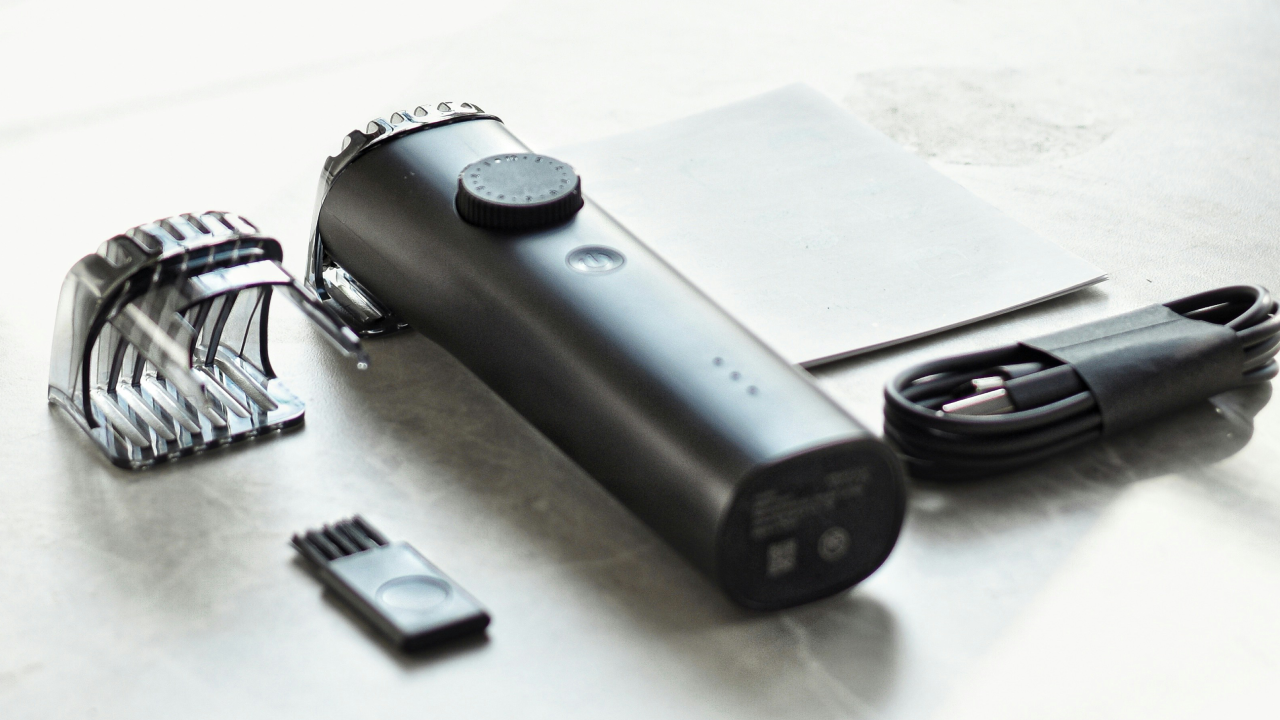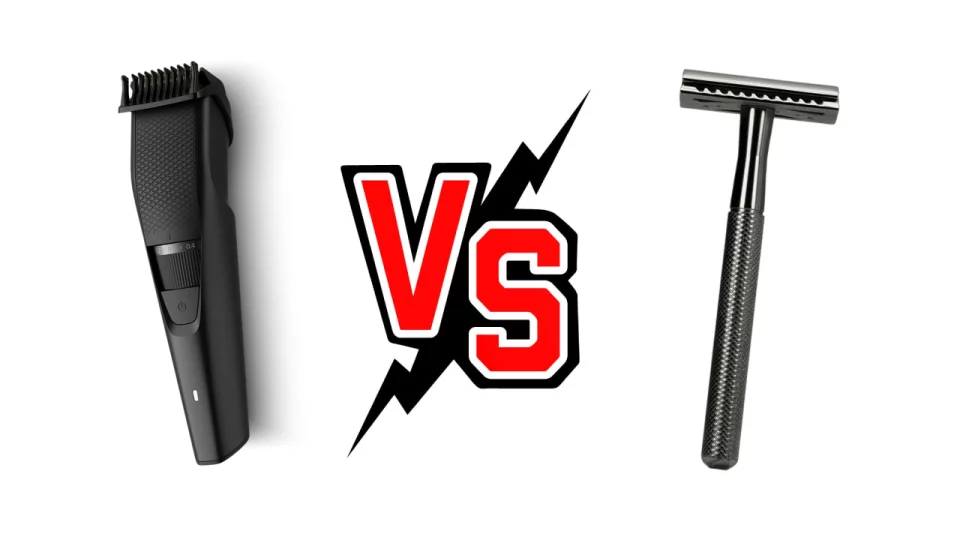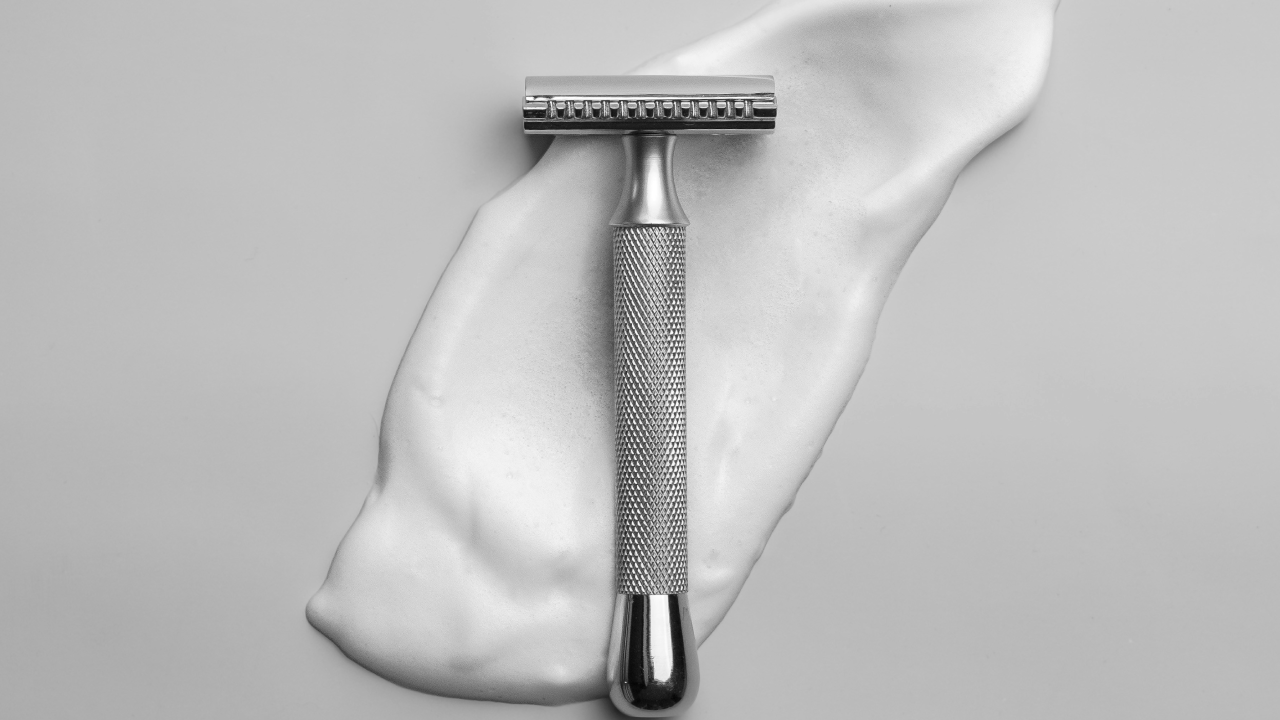The debate between using a beard trimmer or a razor for grooming has been ongoing for years.
Both tools are essential for achieving different styles and levels of grooming precision, but they cater to different needs and preferences. The question “What is better: a beard trimmer or razors?” cannot be answered with a simple statement because the answer largely depends on what you’re looking for in your grooming routine, your lifestyle, and your skin type.
Deep dive into the pros and cons of each tool, how they serve different purposes, and help you decide which one is better for your personal grooming needs.
Table of Contents
Understanding Beard Trimmers and Razors
Before we dive into the pros and cons, it’s essential to understand the core differences between these two grooming tools.
- Beard Trimmer: A beard trimmer is an electric device used to cut and shape facial hair to a specific length. It uses adjustable or fixed blades that move back and forth at high speed to trim the hair. Most beard trimmers come with multiple length settings, allowing you to customize your grooming style easily.
- Razor: A razor, in contrast, is used for shaving facial hair close to the skin. Razors can be either manual (traditional cartridge razors, safety razors, or straight razors) or electric. Manual razors cut hair at the surface of the skin, while electric razors use oscillating blades to achieve a close shave without direct contact with the skin.
Now that we understand the basic functions, let’s dive into the advantages and disadvantages of each.

Advantages of Beard Trimmers
- Control Over Length
Beard trimmers are the go-to tool for men who want to maintain facial hair at a specific length rather than shaving it clean. You can use various attachments to set your desired beard length, allowing for more styling options. - Great for Sensitive Skin
If you have sensitive skin that gets irritated easily from the close contact of a razor, a beard trimmer might be your best friend. Since trimmers don’t usually make direct contact with the skin, the risk of razor burns, nicks, and irritation is minimal. - Versatility
Beard trimmers aren’t just for beards. Most models are versatile and can be used for trimming hair on other parts of the body like the chest, legs, or head. Many people prefer using a beard trimmer for overall body grooming because it offers precision without the risk of cuts. - Longer Hair Styles
If you’re sporting a beard, goatee, or stubble, a beard trimmer will help you keep it well-groomed. The ability to set different lengths means you can maintain anything from 5 o’clock shadow to a full beard. - Lower Maintenance Costs
Trimmers generally have a one-time purchase cost, and while you may need to replace the blades occasionally, the maintenance cost is much lower than constantly buying new razor cartridges or shaving creams. - Faster Grooming Sessions
For those who prefer quick grooming, a beard trimmer is an efficient tool. You don’t need to spend as much time preparing your face with water and shaving cream, and you won’t need to deal with the delicate precision required for razor shaving.
Disadvantages of Beard Trimmers
- Not for a Clean Shave
One of the most significant drawbacks of a beard trimmer is that it cannot give you a clean-shaven look. The blades of a trimmer don’t cut as close to the skin as a razor, meaning you’ll still have some stubble after using it. - Requires Maintenance
Though trimmers are relatively low-maintenance, they still need regular cleaning and charging (in the case of battery-operated models). If not properly maintained, the trimmer’s blades can dull over time, reducing its effectiveness. - No Precision in Close Shaving
A trimmer is excellent for maintaining length but falls short when it comes to shaping your beard or achieving sharp edges. For precise lines or a completely smooth shave, you might still need a razor. - Battery Dependence
For cordless models, you’ll need to ensure the battery is charged before use. If you’re traveling or caught with a dead battery, you may be out of luck.
Advantages of Razors
- Close Shave
Razors are the tool of choice when you want a clean, smooth, baby-faced shave. Nothing cuts closer to the skin than a razor, especially a sharp manual one. Razors remove hair completely at the surface of the skin, giving a polished, neat appearance. - Precision Shaving
For shaping beards, mustaches, or sideburns, nothing beats a razor’s precision. Whether you’re using a straight razor or a cartridge razor, you can achieve sharp, clean lines that are essential for well-groomed facial hair. - Exfoliation Benefits
While shaving with a razor, you’re also exfoliating the skin by removing dead skin cells along with the hair. This can leave your skin feeling fresh and smooth, and helps in preventing clogged pores. - No Need for Charging
Manual razors don’t rely on batteries or power, making them highly convenient for travelers. You can use them virtually anywhere, anytime, without the need for electricity. - Cost-Effective for Occasional Shavers
If you don’t need to shave daily, manual razors can be more cost-effective in the short term compared to buying an electric trimmer. You simply need to replace the cartridge or blades after a few uses.
Disadvantages of Razors
- Risk of Cuts and Irritation
Shaving with a razor can often lead to cuts, nicks, and razor burn, especially if your technique isn’t perfect. For men with sensitive skin, this can lead to irritation, redness, and even ingrown hairs. - High Ongoing Costs
While the initial cost of a razor is low, the frequent replacement of blades or cartridges, as well as the need for shaving creams, aftershaves, and other products, adds up over time. - More Time-Consuming
Shaving with a razor takes longer than trimming. You’ll need to prepare your skin, lather up with shaving cream, and carefully shave your face. This is not ideal for those with busy schedules who prefer a quicker grooming routine. - Requires Skill
Using a razor, especially a straight razor or safety razor, requires a certain level of skill. If you’re not careful, you could end up with razor burn, cuts, or an uneven shave. Learning proper shaving techniques can take time and practice. - Not Ideal for Long Hair
Razors are designed to shave hair down to the skin, so they’re not suitable for maintaining longer facial hair styles like beards. You would need to use a trimmer first before using a razor for a clean shave.
The Best of Both Worlds: Combining a Trimmer and Razor
For many men, the best solution isn’t choosing between a beard trimmer or a razor, but using both depending on the situation. Here’s how a combination can work:
- Everyday Maintenance: Use a beard trimmer to keep your facial hair at your desired length. This is especially useful if you’re maintaining stubble or a short beard.
- Special Occasions: For important events or when you want a clean-shaven look, switch to a razor for a close, smooth shave.
- Precision Shaping: You can use a trimmer for general maintenance but rely on a razor to shape your beard’s edges and give it a more defined look.
- Exfoliation: Using a razor occasionally can help exfoliate your skin and prevent dead skin cells from accumulating, reducing the risk of acne or clogged pores.

